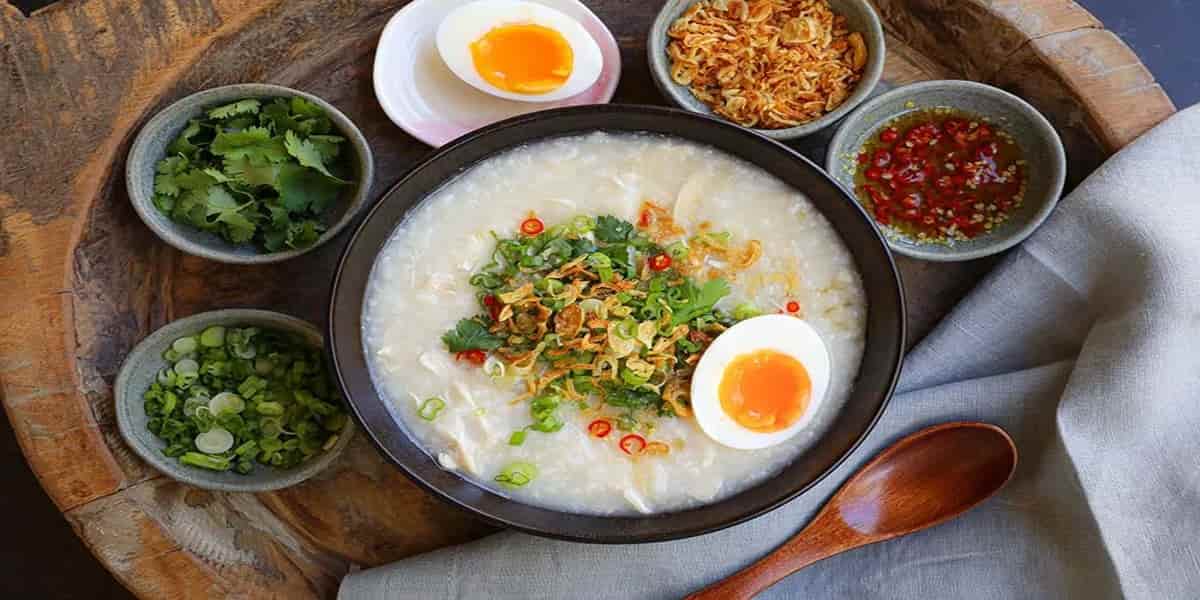Porridge
Doodlebrary
- Porridge is one of the oldest and most universal dishes known to humanity.
- Its origins can be traced back thousands of years, to a time when grains were first cultivated.
- Across cultures and continents, porridge has been a staple food, providing warmth, sustenance, and comfort to generations.
- But what exactly is porridge, and why does it remain so popular?
- At its core, porridge is a simple dish made by cooking grains or legumes in water or milk until they soften and form a thick, creamy texture.
- While oats are the most common grain used in porridge today, the dish can also be made with rice, barley, millet, cornmeal, or even quinoa.
- The versatility of porridge lies in its ability to adapt to different ingredients and flavors, making it a beloved dish across diverse cultures.
- Diiferent Types of Porridge
- Oatmeal (Oat Porridge): Perhaps the most well-known version, oatmeal is made by simmering oats in water or milk. It can be served plain or sweetened with honey, maple syrup, or fruits. Toppings like nuts, seeds, and spices (cinnamon is a favorite) add texture and flavor, making it a popular breakfast choice worldwide.
- Rice Porridge (Congee or Jook): In Asia, rice porridge is a staple comfort food. Known as congee in China, jook in Korea, and cháo in Vietnam, this savory dish is often served with various toppings such as shredded chicken, preserved eggs, green onions, and soy sauce. It’s particularly popular as a breakfast food or a remedy for illness.
- Polenta: This Italian dish is made from boiled cornmeal and can be served soft and creamy or allowed to set and then sliced. Polenta is often paired with hearty stews, cheeses, or vegetables, making it a versatile dish that can be enjoyed at any time of day.
- Barley Porridge: Barley is another ancient grain that has been used to make porridge for centuries. It has a slightly nutty flavor and a chewy texture. Barley porridge can be sweetened with dried fruits and honey or served savory with herbs and butter.
- Millet Porridge: Popular in parts of Africa and India, millet porridge is a gluten-free option with a mild flavor. It’s often enjoyed with spices, yogurt, or fruit.
- Nutritional Benefits Of Porridge
- Oatmeal (Oat Porridge): Perhaps the most well-known version, oatmeal is made by simmering oats in water or milk. It can be served plain or sweetened with honey, maple syrup, or fruits. Toppings like nuts, seeds, and spices (cinnamon is a favorite) add texture and flavor, making it a popular breakfast choice worldwide.
- Rice Porridge (Congee or Jook): In Asia, rice porridge is a staple comfort food. Known as congee in China, jook in Korea, and cháo in Vietnam, this savory dish is often served with various toppings such as shredded chicken, preserved eggs, green onions, and soy sauce. It’s particularly popular as a breakfast food or a remedy for illness.
- Polenta: This Italian dish is made from boiled cornmeal and can be served soft and creamy or allowed to set and then sliced. Polenta is often paired with hearty stews, cheeses, or vegetables, making it a versatile dish that can be enjoyed at any time of day.
- Barley Porridge: Barley is another ancient grain that has been used to make porridge for centuries. It has a slightly nutty flavor and a chewy texture. Barley porridge can be sweetened with dried fruits and honey or served savory with herbs and butter.
- Millet Porridge: Popular in parts of Africa and India, millet porridge is a gluten-free option with a mild flavor. It’s often enjoyed with spices, yogurt, or fruit.
- Nutritional Benefits Of Porridge
- Porridge is not just comforting and versatile; it’s also nutritious. The slow-cooked grains in porridge release energy gradually, helping to keep you fuller for longer.
- This makes porridge an excellent option for those looking to manage their weight or maintain steady energy levels throughout the day.
- Additionally, porridge is rich in fiber, which supports digestive health, and provides essential vitamins and minerals such as iron, magnesium, and B vitamins.
- The nutritional content of porridge can vary depending on the grains used and the toppings or accompaniments added.
- For example, oatmeal is a good source of beta-glucan, a type of soluble fiber that has been shown to lower cholesterol levels.
- The Cultural Significance of Porridge
- Porridge is more than just a dish; it’s a part of cultural heritage. In Scotland, for example, oatmeal porridge is a traditional breakfast food, often served with a pinch of salt.
- Scottish families historically made their porridge in a large pot, which would be stirred with a special wooden utensil called a “spurtle.”
- In many Asian countries, rice porridge is a symbol of comfort and care, often prepared for loved ones who are ill or recovering.
- It’s considered easy to digest and gentle on the stomach, making it a go-to food for people of all ages.
- While porridge is a simple dish, achieving the perfect consistency requires attention to detail. Here’s a basic guide to making classic oatmeal porridge:
- 1 cup rolled or steel-cut oats
- 2 cups water or milk (or a combination of both)
- A pinch of salt
- In a medium saucepan, bring the water or milk to a boil.
- Add the oats and a pinch of salt. Reduce the heat to low.
- Simmer the oats, stirring occasionally, until they absorb the liquid and reach your desired consistency (about 5 minutes for rolled oats and 20-30 minutes for steel-cut oats).
- Serve hot, with your choice of toppings, such as
